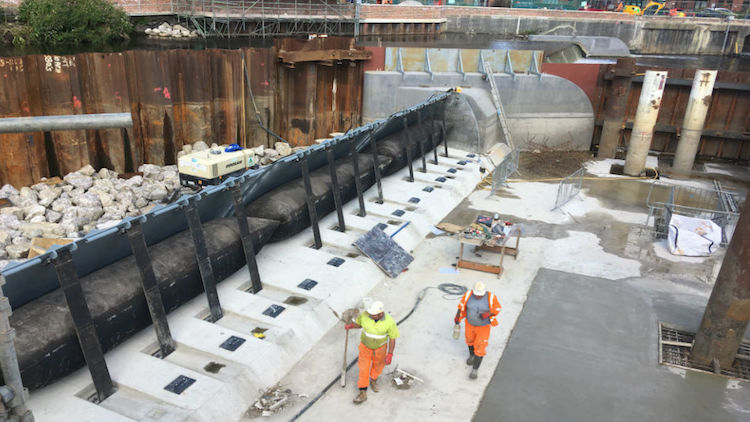
The Environment Agency is set to roll out a carbon and cost estimating tool, developed with Aecom, across all its construction projects to help the organisation meet its 2030 net zero ambitions.
The first phase of the roll out will be used to calculate capital cost and whole-life carbon, with later phases focused on whole-life cost estimates, integration with BIM and capture of actuals from the supply chain. Once fully deployed, the tool will enable the Environment Agency to consider whole-life assessments for both cost and carbon during investment decision-making.
According to Aecom, the tool will help build estimates much faster, reducing the time it takes to calculate project specifics and enabling earlier engagement with suppliers. Capturing actuals and comparing them to planned rates also means benchmark rates will continually improve, narrowing the estimating gap and facilitating client-led cost setting.
Central to the development of the tool is the use of asset ‘assemblies’ that produce detailed cost and carbon estimates throughout the project lifecycle, including the early stages when typically, little scope detail exists. As a project design develops, asset details and assumptions can be replaced with known scope, which will instantly produce revised cost and carbon estimates. This will enable the Environment Agency to monitor its carbon impact and reduce uncertainty when target price setting with suppliers, accelerating the process of getting projects into delivery.
Aecom was tasked with developing the approach, methodology, and datasets of the cost and carbon tool; these specifications were configured by the Ares Prism team into its project estimation software Prism Estimating.
Alex Jones, carbon and cost tool project manager at the Environment Agency, said: “By combining this capability into one platform, we expect to benefit from faster estimates built around one consistent methodology with added transparency in the estimation build-up. We expect this improved transparency will help early supplier engagement and allow projects to assess options, reach optimal solutions and make better informed decisions earlier.”
Tristan Harvey-Rice, director, cost intelligence at Aecom, said: “Bringing together carbon and cost data in this new way of working means carbon can sit at the heart of project prioritisation every single time. The tool makes huge amounts of up-to-date cost and carbon data very accessible, bringing efficiencies to the estimating process and crucially, enabling better informed decision-making around carbon.”
Don’t miss out on BIM and digital construction news: sign up to receive the BIMplus newsletter.












